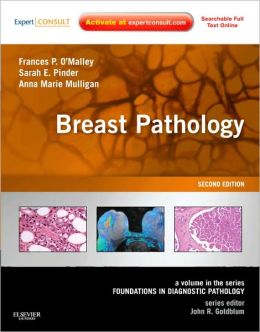-88%
Understanding Breast Pathology: A Comprehensive Guide
Breast pathology encompasses the study and diagnosis of abnormalities and diseases affecting the breast. It is a specialized field that requires expertise in interpreting breast biopsies to accurately diagnose and determine the appropriate treatment plan for patients. This article delves into various aspects of breast pathology, highlighting the significance of different diagnostic tests and techniques.
Benign Breast Disease: Atypical Proliferative Lesions and Breast Cancer Risk
Benign breast disease refers to non-cancerous breast changes that are relatively common in women. Atypical proliferative lesions are a type of benign breast disease that can increase the risk of developing breast cancer. Understanding the characteristics and diagnostic criteria of these lesions is crucial for early detection and appropriate management.
Sclerosing Lesions of the Breast: A Multifaceted Clinical Entity
Sclerosing lesions of the breast are benign breast changes that can sometimes mimic breast cancer. Proper diagnosis is essential to avoid unnecessary biopsies and ensure appropriate patient management. This article explores the clinical presentation, histological features, and differential diagnosis of sclerosing lesions, offering guidance for accurate interpretation and management.
Genomic Profiling in Breast Cancer: Enhancing Diagnosis and Treatment Planning
Genomic profiling has revolutionized the diagnosis and treatment of breast cancer. This article examines the role of genomic testing in identifying genetic alterations that drive tumor development. Understanding the implications of these genomic alterations helps guide personalized treatment decisions and improve patient outcomes.
Breast Cancer Predictive Factor Testing: Bridging the Gap Between Diagnosis and Management
Predictive factor testing, such as estrogen receptor (ER), progesterone receptor (PR), and human epidermal growth factor receptor 2 (HER2) testing, plays a vital role in breast cancer management. This article discusses the principles and techniques of predictive factor testing, highlighting its clinical significance in tailoring treatment strategies and optimizing patient care.
Ancillary Breast Cancer Studies: Unraveling Complex Clinical Scenarios
Special techniques, known as ancillary studies, are often employed to complement routine diagnostic tests in breast pathology. This article explores various ancillary studies, including immunohistochemistry, flow cytometry, and next-generation sequencing. Understanding their clinical indications and interpretation helps address challenging cases and provide accurate diagnoses.
Challenging Breast Pathology Case Studies: Advancing Diagnostic Expertise
Case studies present valuable learning opportunities for pathologists. This article showcases a series of challenging breast pathology case studies, highlighting the importance of considering differential diagnoses, recognizing diagnostic pitfalls, and incorporating relevant clinical information to arrive at the correct interpretation.
HER2 Expression in Gastrointestinal Malignancies: Insights from Breast Cancer
HER2 is a protein that is often overexpressed in breast cancer and is associated with aggressive disease. This article investigates HER2 expression in gastrointestinal malignancies and compares its significance with that in breast cancer. Understanding the differences and similarities can guide treatment decisions and improve patient outcomes.
Liver Biopsies in the Post-Hepatitis C Era: Evolving Approaches
Chronic hepatitis C infection can lead to liver disease and potentially hepatocellular carcinoma. This article discusses the role of liver biopsies in the post-hepatitis C era, considering the evolving landscape of HCV treatment and the impact on liver pathology. It explores the rationale for biopsies, appropriate timing, and techniques for accurate diagnosis and management.
Universal Screening for Lynch Syndrome in Colon Cancer: A Paradigm Shift
Lynch syndrome is an inherited condition that increases the risk of colon and other cancers. This article emphasizes the importance of universal screening for Lynch syndrome in colon cancer patients. Understanding the clinical and genetic implications of Lynch syndrome can lead to early diagnosis, appropriate surveillance, and targeted treatment options.
Surgical Pathology Subspecialty Sign-Out: A Comprehensive Framework
Subspecialization in pathology allows pathologists to develop expertise in specific areas of medicine, including surgical pathology. This article provides a comprehensive framework for considering subspecialization in surgical pathology, outlining the advantages, challenges, and practical considerations involved in making this career decision.
Cutaneous Soft Tissue Tumors: Mimics and Differential Diagnoses
Cutaneous soft tissue tumors are a diverse group of lesions that can mimic other conditions. This article explores the clinical and histopathological characteristics of common cutaneous soft tissue tumors and their potential mimics. Understanding the differential diagnoses helps ensure accurate diagnosis and appropriate management.
Lipomatous Tumors: A Comprehensive Overview
Lipomatous tumors are benign tumors composed of fat cells. This article provides a comprehensive overview of lipomatous tumors, including their classification, clinical presentation, histopathology, and differential diagnosis. Understanding the spectrum of lipomatous tumors facilitates accurate diagnosis and appropriate treatment.
Intra-abdominal and Retroperitoneal Spindle Cell Tumors: A Diagnostic Dilemma
Spindle cell tumors are a group of soft tissue tumors that can occur in the intra-abdominal and retroperitoneal regions. This article examines the challenges in diagnosing these tumors, highlighting the importance of clinicopathological correlation and ancillary studies to differentiate between benign and malignant lesions.
Matrix Forming Mesenchymal Lesions: Unveiling Their Complexity
Matrix forming mesenchymal lesions are a group of soft tissue tumors that produce extracellular matrix components. This article explores the histopathological features, differential diagnosis, and clinical significance of these lesions, providing insights into their complex nature and management strategies.
New Entities in Soft Tissue Pathology: Expanding the Diagnostic Spectrum
Advances in molecular and genetic techniques have led to the identification of new soft tissue entities. This article discusses some of the recently recognized soft tissue tumors, emphasizing their unique characteristics and diagnostic criteria. Understanding these new entities ensures accurate diagnosis and appropriate patient management.
Genital Stromal Tumors and Soft Tissue Summary: A Comprehensive Understanding
Genital stromal tumors are a group of soft tissue tumors that arise from the reproductive tract. This article provides a comprehensive summary of these tumors, including their classification, clinical presentation, histopathology, and differential diagnosis. Understanding the spectrum of genital stromal tumors is crucial for accurate diagnosis and appropriate patient management.
The Pathology of Skeletal Lesions: An Integrated Approach to Differential Diagnosis Part 1 and 2
Skeletal lesions cover a wide range of diseases and conditions affecting the bones. This two-part article provides an integrated approach to the differential diagnosis of skeletal lesions, considering clinical, radiological, and histopathological features. It emphasizes the importance of a multidisciplinary approach to accurately diagnose and manage skeletal pathology.
maybe you like these too:
- Breast Ultrasound: World Class CME and Oakstone Clinical Update (Videos)
- Gidedental Soft Tissue Management around Natural Teeth and Dental Implants 2020 (Videos)
- Breast Disorders, An Issue of Obstetric and Gynecology Clinics, 1e (The Clinics: Internal Medicine)
- Breast Cancer, An Issue of Hematology/Oncology Clinics of North America, 1e (The Clinics: Internal Medicine)










Reviews
Clear filtersThere are no reviews yet.